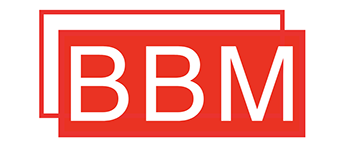How to ensure quality during the welding process?
Date: 2025-05-28 Click: 545
To ensure the welding quality, systematic management needs to be carried out in aspects such as process control, personnel qualifications, process monitoring and inspection and testing. The specific measures are as follows:
🔧 I. Preparation before welding
Materials and Equipment Control :
Welding materials (electrodes/wires) should match the material of the workpiece to be welded and avoid moisture (damp electrodes increase the defect rate by 30%).
Equipment status checks (power stability, line integrity) reduce welding faults by 20%.
bevel treatment :
Thoroughly clean the oil stains and rust on the bevel to prevent pores and slag inclusions.
Control the bevel Angle and assembly clearance to avoid uneven weld seam dimensions.
⚡ 2. Welding process control
parameter precision control :
Adjust the current/voltage/speed according to the thickness and material of the workpiece: If the current is too high, it will pass through the thin plate; if it is too low, it will not fuse.
Gas shielded welding requires control of the welding torch Angle (10-15mm from the base material) and the swing amplitude (≤ 1.5 times the inner diameter of the nozzle).
Standard practice :
Maintain a uniform welding speed and a stable molten pool to avoid undercut and weld bead.
Adopt a reasonable welding sequence (from the middle to both sides) to reduce deformation stress.
Environment and environmental control :
Avoid the failure of gas protection caused by strong wind conditions. When the humidity is high, prevent hydrogen-induced cracks.
🔍 3. Post-weld inspection and defect treatment
Multistage detection process :
Visual inspection : Visual inspection for surface cracks, depressions, undercut (>0.5mm requires rework);
Non-destructive testing : X-ray or ultrasonic testing for internal defects such as pores and incomplete fusion.
Defect repair standards :
Once cracks are found, they should be repaired immediately in accordance with the principle of "hidden dangers are accidents" (such as the treatment of cracks ranging from 0.5 to 1mm in the case of Yangjiang Special Inspection Institute).
If the excess height of the weld seam exceeds the standard (such as the inner wall of the pipe requiring ≤0.7mm), grinding wheel dressing or repair welding is required.
👨🔧 IV. Personnel and system assurance
Welder qualification : Certified to work and regular assessment to reduce human error 37;
Digital monitoring : Welding parameters are recorded using systems such as WeldCloud and compared with Process Specifications (WPS) in real time;
Standard implementation : Comply with international/domestic specifications such as ISO 15614 (Welding Procedure Qualification) and AWSD1.1 (Steel Structures Standard).
Special management of high-risk scenarios : For pipelines transporting flammable media, immediate repair of surface corrosion and optimization of anti-corrosion measures are required; The inspection frequency of old equipment or aerospace components needs to be increased.
Through the above-mentioned full-process control, the risks of eight major defects such as weld porosity and cracks can be systematically reduced 411, ensuring the safety and service life of the structure.


